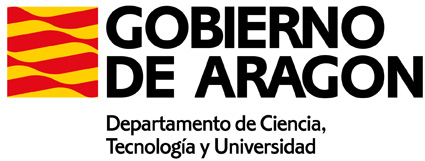-
Projects
PROY_E17_24. Microsampling and high-temporal and -spatial resolution for minimally invasive clinical analysis and single-cell analysis

- Start date: 01-01-2024
- End date: 31-12-2026
- Coordinator: Martín Resano and Eduardo Bolea Fernández
- Type: Development of R&D&I projects in priority fields and multidisciplinary areas for the 2024–2026 period. Government of Aragón
Abstract: The project aims to develop new analytical methodologies that allow, on one hand, the quantitative analysis of dried blood spots and, on the other, single-cell analysis—both using ICP-MS technology and new microsampling strategies. In order to improve these methods and expand their application range, it is necessary to explore both the use of novel devices capable of handling samples in the micro- and nanoliter range, and the development of alternative sample introduction approaches based on microfluidics.
The use of an automated nanoliquid dispenser system may contribute to the development of new analytical methods for determining low concentrations of analytes in all types of micro/nano samples, including cells. These devices are capable of dispensing controlled volumes and ensuring the presence of cells in each droplet with high efficiency, greatly facilitating single-cell analysis. Likewise, these devices allow for the precise deposition of nanovolumes of blood or other fluids onto DBS supports, ensuring a more uniform and controlled distribution of the sample. Using these devices, DBSs can also be functionalized with enzymes, markers, or antibodies, enabling subsequent analysis and opening the door to the detection of species beyond elemental ones.
The use of microfluidic chips as a sample introduction medium can be considered an elegant approach to overcoming the challenge of introducing individual entities. These chips offer the possibility of encapsulating cells before introducing them into the ICP, thereby increasing the likelihood that cells remain intact through the introduction process. Introduction efficiencies are also expected to be much higher compared to other alternative approaches. Finally, functionalizing these devices enables additional operations, including reactions and separations. This opens new avenues for online analysis of various cell types and/or for labeling with specific antibodies, which could enable the study of different cell types, states, and functions in cell suspensions.
PUBLICATIONS
2025
Bazo, Antonio; Bolea-Fernandez, Eduardo; Rua-Ibarz, Ana; Aramendía, Maite; Resano, Martín
En: Anal. Chem., 2025, ISSN: 1520-6882.
@article{nokey,
title = {Ions with Ions, Entities with Entities: A Proof-of-Concept Study Using the SELM-1 Yeast Certified Reference Material for Intra- and Extracellular Se Quantification via Single-Cell ICP-Mass Spectrometry},
author = {Antonio Bazo and Eduardo Bolea-Fernandez and Ana Rua-Ibarz and Maite Aramendía and Martín Resano},
url = {https://pubs.acs.org/doi/10.1021/acs.analchem.5c01588},
doi = {https://doi.org/10.1021/acs.analchem.5c01588},
issn = {1520-6882},
year = {2025},
date = {2025-06-07},
urldate = {2025-06-07},
journal = {Anal. Chem.},
abstract = {In this work, two novel nanoparticle (NP)-based calibration strategies, external calibration and a relative method, have been explored for single-cell ICP-mass spectrometry (SC-ICP-MS) analysis. The fundamental principle of these methods is to rely on individual entities (well-characterized NPs of the target analyte) for calibration rather than on ionic standard solutions. The performance of the NP-based calibration approaches has been compared to that of the reference method (particle size with AuNP standards). In addition to the intracellular Se content (mass per individual cell), the extracellular Se (dissolved fraction) was also determined directly and simultaneously using the average background from the SC-ICP-MS time-resolved signal. The figures-of-merit of the methods developed have been evaluated by relying on the analysis of the SELM-1 cell-certified reference material, consisting of Se-enriched yeast cells, and certified for its total Se content (intracellular + extracellular Se). All methods successfully determined the Se elemental contents, but an improvement in accuracy and precision was observed for the NP-based methods compared to the reference one. Furthermore, the NP-based methods were found to be less time-consuming, more straightforward, and more user-friendly in terms of calculations. These results open new avenues for calibration in quantitative SC-ICP-MS analysis and call for a fundamental change in the methodology, where the determination of ionic contents is based on the use of ionic standard solutions for calibration, while the determination of elemental contents in discrete micro/nanoentities, such as cells, should ideally be based on calibration using standard entities, thus avoiding the need to calculate a transport efficiency coefficient.},
keywords = {},
pubstate = {published},
tppubtype = {article}
}
Nakadi, Flávio V.; Garcia-Garcia, Alicia; Rua-Ibarz, Ana; Resano, Martín
LAMIS in the gas phase: A new approach for obtaining Ca elemental and isotopic information via CaF molecule formation Journal Article
En: Talanta, vol. 292, pp. 127920, 2025, ISSN: 0039-9140.
@article{NAKADI2025127920,
title = {LAMIS in the gas phase: A new approach for obtaining Ca elemental and isotopic information via CaF molecule formation},
author = {Flávio V. Nakadi and Alicia Garcia-Garcia and Ana Rua-Ibarz and Martín Resano},
url = {https://www.sciencedirect.com/science/article/pii/S0039914025004102},
doi = {https://doi.org/10.1016/j.talanta.2025.127920},
issn = {0039-9140},
year = {2025},
date = {2025-01-01},
urldate = {2025-01-01},
journal = {Talanta},
volume = {292},
pages = {127920},
abstract = {This work introduces a novel method for generating the calcium monofluoride (CaF) diatomic molecule by adding the molecule-forming reagent in the gaseous phase (a methyl fluoride-argon mixture), in order to perform laser-induced breakdown spectroscopy (LIBS) and laser ablation molecular isotopic spectrometry (LAMIS) measurements. By optimizing the instrumental parameters, CaF molecule formation was successfully achieved within the plasma plume, upon ablation of dried liquid samples. The isotopic shift for the X2Σ→A2Π (0,1) CaF vibronic transition at 583.0 nm was calculated to be 292.3 pm. The method proved capable of providing quantitative information for determining calcium concentrations in real samples, such as tap water and skimmed milk, using internal standardization (with Sr as internal standard; limit of detection, LOD, 20 mg L−1) and isotope dilution (which can be applied from 400 mg L−1on), respectively. Partial least squares regression (PLS) analysis was employed to enhance the quality of the isotopic data. The Ca concentration found in the tap water was 47 ± 16 mg L−1 (reference flame atomic absorption spectrometry, FAAS, value: 59 ± 0.2 mg L−1), and 1100 ± 140 mg L−1 for the skimmed milk (reference FAAS value: 1240 ± 120 mg L−1). No significant difference between LIBS and FAAS results could be established using a t-test at the 95% confidence level. Overall, this novel approach allows for the determination of calcium in terms of both the elemental concentration and the isotopic composition, thus broadening the applicability of LIBS (e.g., for tracer experiments, besides the already mentioned application of isotope dilution).},
keywords = {},
pubstate = {published},
tppubtype = {article}
}
